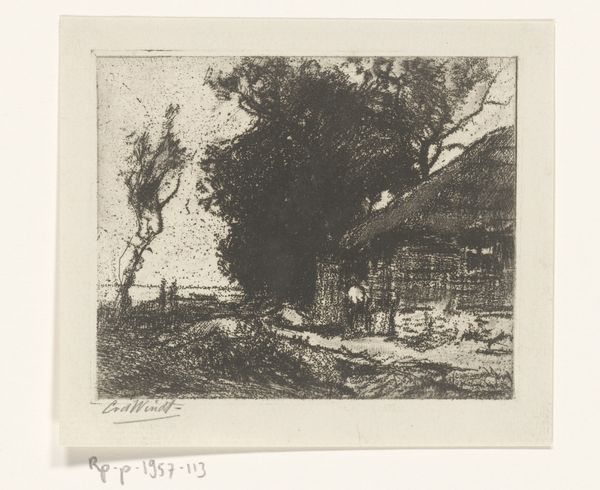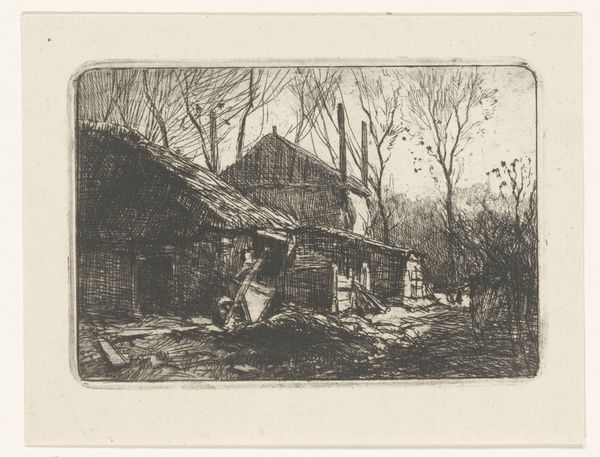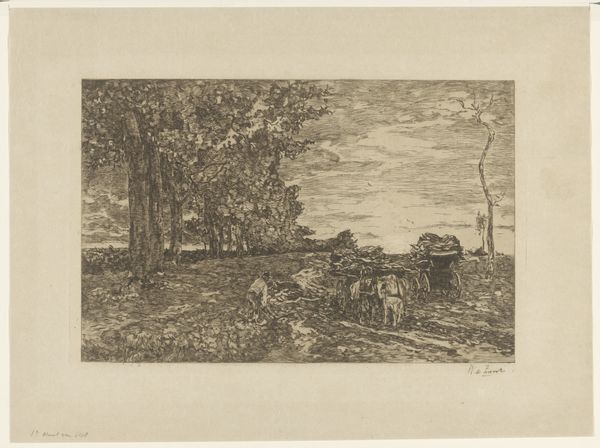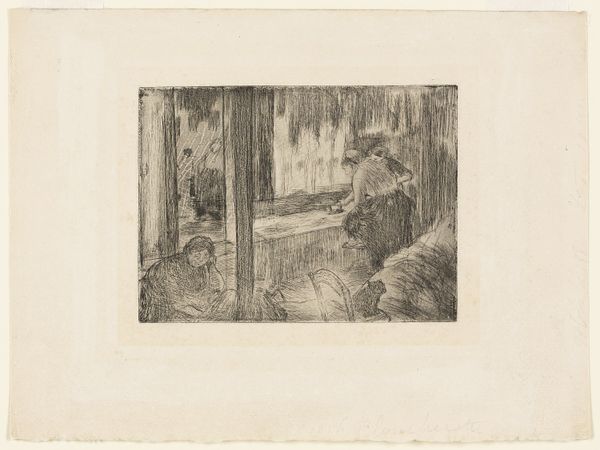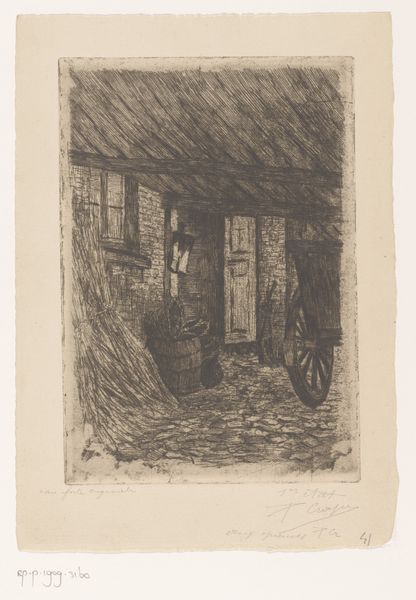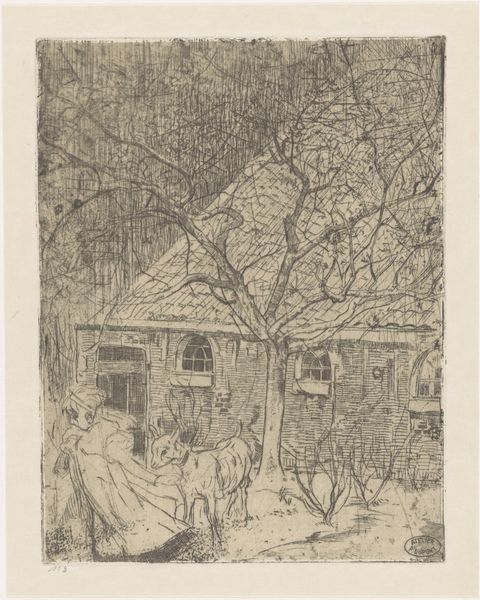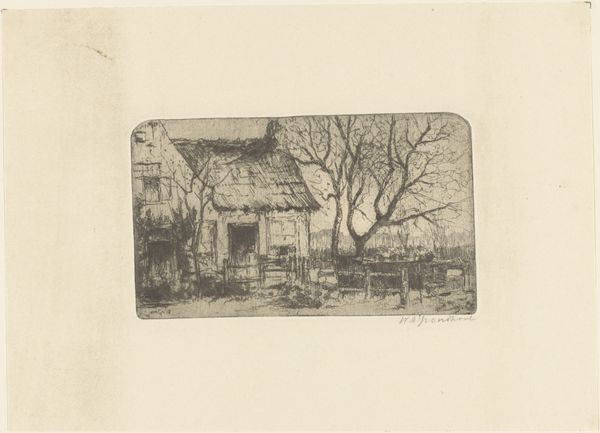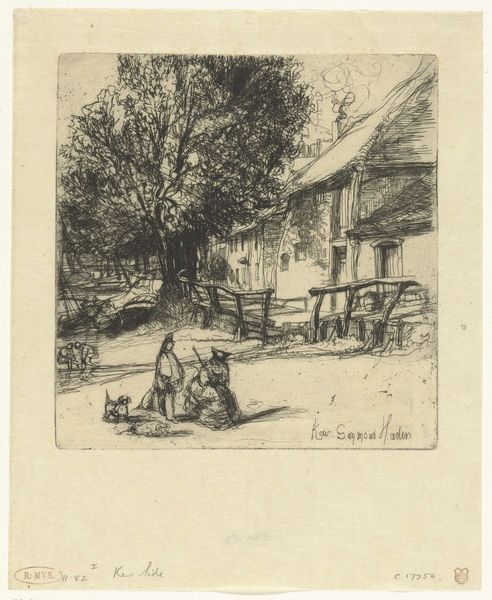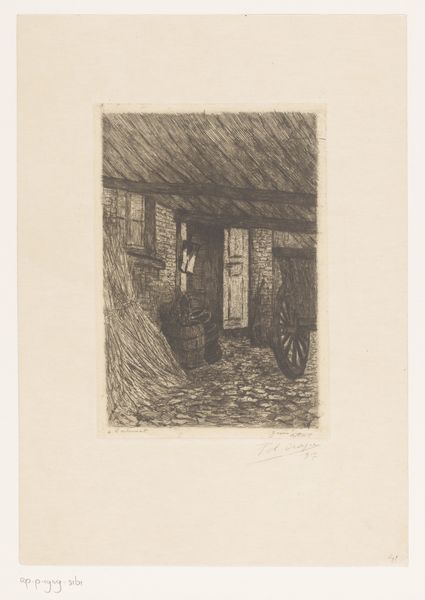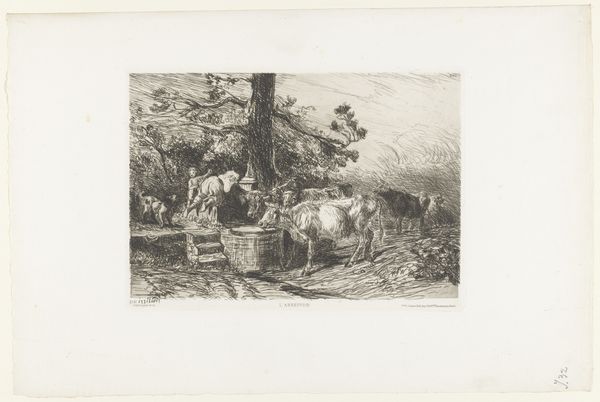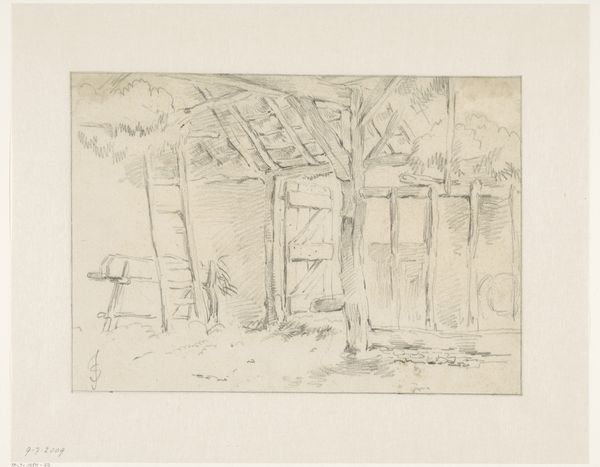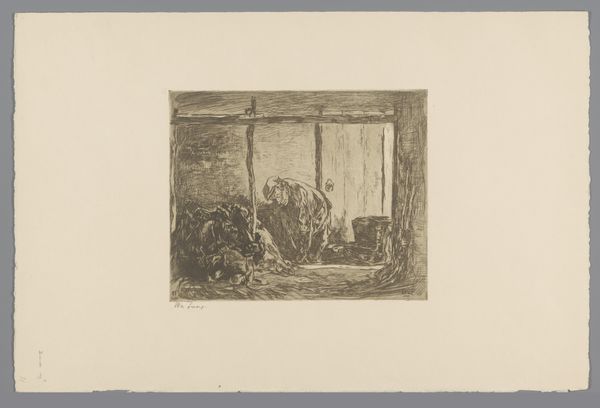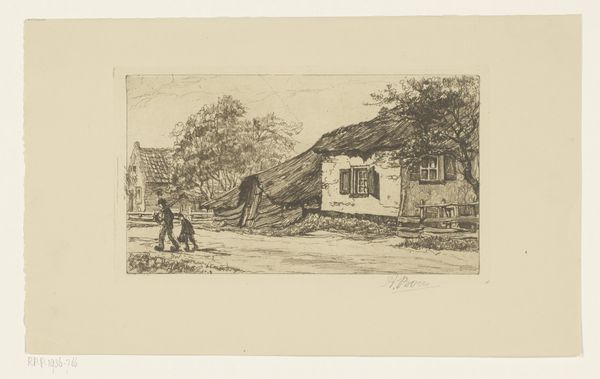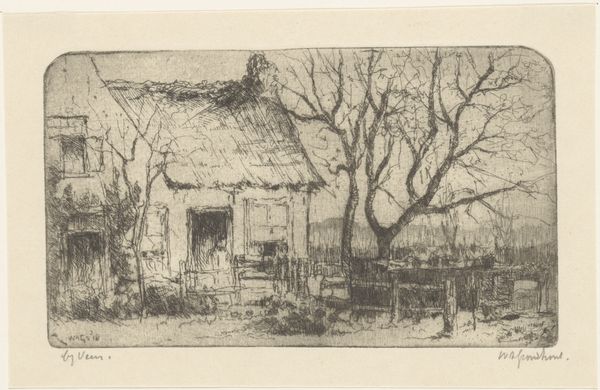
print, etching
# print
#
etching
#
landscape
#
genre-painting
#
realism
Dimensions: height 182 mm, width 237 mm
Copyright: Rijks Museum: Open Domain
Curator: The mood that pervades "Boerenkar bij boerderij" immediately strikes me as melancholic, perhaps a reflection on rural life, especially given its small scale and monochrome palette. Editor: Chris Snijders crafted this etching sometime between 1891 and 1943. We see what looks like a traditional thatched-roof farmhouse. A horse-drawn cart occupies the foreground, a lone figure stands by the farmhouse door. For me it speaks to a narrative, but what stands out to you in the visual language of this artwork? Curator: The contrast of light and shadow is definitely the main technique here. The etcher masterfully uses short lines to suggest form and texture. The composition itself is interesting. I'm seeing an idealized scene of labor – not exactly the back-breaking reality, wouldn't you agree? It brings to mind how "genre paintings," as it's labeled, were often used to subtly promote certain ideologies about labor and class structure. The pastoral scenes served a distinct social purpose. Editor: Absolutely. This interplay is quite striking, especially when we analyze the texture of the farmhouse versus the smooth lines depicting the cart. I would argue that we are not given all of the details, encouraging contemplation as the viewer connects with the humanistic spirit captured by the scene. This lends itself to a sense of immediacy and the temporal condition of rural working class life. Curator: Thinking about it that way is useful. What stands out in the work is how it attempts to grapple with representing rural society, while maybe unconsciously participating in creating its own social narrative. The realism style that's been associated with the etching does offer the opportunity to bring those issues front and center and opens up to thinking about labor and representation intersectionally. Editor: Indeed. Its very construction becomes an invitation for dialogue. It makes this seemingly simple composition profoundly complex. Curator: Right. I won’t look at an idyllic farm scene the same way again. Editor: Nor will I!
Comments
No comments
Be the first to comment and join the conversation on the ultimate creative platform.
